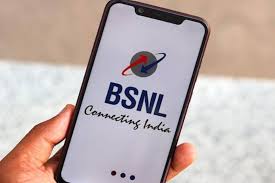Bharat Sanchar Nigam Ltd (BSNL) has seen a notable boost in its performance following the nationwide rollout of its 4G services. The state-run telecom operator’s average revenue per user (ARPU) rose 12% sequentially to ₹91 in the July–September quarter, compared to ₹81 in the previous quarter, Communications Minister Jyotiraditya Scindia announced on Thursday.
ARPU — a key metric that tracks average earnings per subscriber — improved due to higher data consumption and subscriber additions after the pan-India 4G launch. “There has been a 12% improvement in ARPU. Some circles have shown exceptional performance — Maharashtra’s ARPU stands at ₹214, while Kerala and UP (West) have seen growth of 30% and 13%, respectively,” Scindia said during BSNL’s quarterly review meeting with circle heads.
However, the minister pointed out that circles such as Madhya Pradesh, Jharkhand, and Kolkata, with ARPUs below ₹60, need to show significant improvement.
Despite the progress, BSNL continues to lag behind private operators. Bharti Airtel reported an ARPU of ₹250, Reliance Jio stood at ₹211.4, and Vodafone Idea at ₹165 for the same period.
During the September quarter, BSNL’s revenue reached ₹5,347 crore, achieving 93% of its targeted ₹5,740 crore. “We are very close to a rather bold target we had set for ourselves based on last year’s strong growth,” Scindia noted. The company is yet to declare its official quarterly financial results.
BSNL formally launched its 4G services on September 26, using India-made technology and a network of over 92,000 towers. The company now serves over 20 million 4G users out of its 91.7 million total subscribers as of August-end.
After reporting profits for two consecutive quarters — a first in 18 years — BSNL slipped back into losses, posting a ₹1,049 crore net loss in the June quarter, compared to a ₹280 crore profit in March. Scindia attributed this to higher capital expenditure of ₹25,000 crore in FY25 and a ₹2,500 crore non-cash depreciation impact, adding that the focus should remain on operating profit and EBITDA rather than net profit.
As per TRAI data, BSNL outperformed Bharti Airtel in subscriber additions for two consecutive months — August and September — taking its total subscriber base to 92.3 million.
During the meeting, Scindia outlined a seven-point roadmap for BSNL’s leadership, emphasizing service quality, cost efficiency, and competitive benchmarking. He directed circle heads to ensure daily performance tracking, eliminate negative EBITDA in any circle, and avoid cost escalations without revenue growth.
BSNL has set a target to increase overall revenue by 20% in FY26 to ₹27,500 crore, compared to around ₹23,000 crore in FY25.
Since 2019, the government has introduced three revival packages worth ₹3.2 trillion to support BSNL and its peer, Mahanagar Telephone Nigam Ltd (MTNL), as part of efforts to strengthen India’s public sector telecom ecosystem.
Disclaimer: This article is for informational purposes only and not intended as investment advice.

